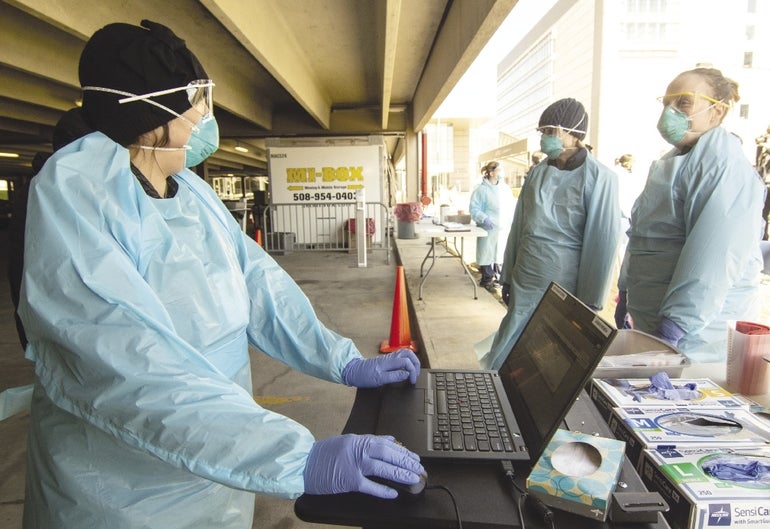The coronavirus pandemic will continue to rage in 2021, as the fallout creates financial crisis.
Get Instant Access to This Article
Subscribe to Worcester Business Journal and get immediate access to all of our subscriber-only content and much more.
- Critical Central Massachusetts business news updated daily.
- Immediate access to all subscriber-only content on our website.
- Bi-weekly print or digital editions of our award-winning publication.
- Special bonus issues like the WBJ Book of Lists.
- Exclusive ticket prize draws for our in-person events.
Click here to purchase a paywall bypass link for this article.
It’s no hyperbole to say the healthcare industry had a year in 2020 no nurses or doctors have experienced before. The coming year won’t be too different in one regard: the coronavirus pandemic will remain a major struggle for at least the early months of 2021, depending on how quickly vaccines can be rolled out and how effective they are in providing enough immunization to the public.
A continuing crisis
The early months of 2021 might seem like deja vu compared to a year prior: packed intensive care units and emergency departments, and startlingly high coronavirus numbers.
There’s reason for worry, with record-high case numbers before the winter even begins. But there’s also reason for optimism: healthcare experts have been able to better treat virus patients, including through the help of remdesivir, an antiviral medication, or convalescent plasma, which comes from the blood of recovered patients and helps those fighting the virus. Hospitalization rates have also so far not risen late in the year as the same rate as total cases, at least partially thanks to a younger demographic taking up a bigger share of cases these days but less likely to have major health risks.
The non-pandemic fight
Coronavirus is rightfully taking up all the attention in health care. But there’s a lot more else going on that worries industry leaders.
Far fewer people were going to hospitals or doctor’s offices for check-ups or screenings, or even emergency needs. The pandemic has caused major concerns with rising anxiety and depression levels due to worries about the pandemic, job concerns or people generally not being able to spend as much time with friends, family or co-workers. Among even other challenges, school-based health centers are having to scramble to provide care to students who need it at a time when public schools in Worcester and elsewhere are having to conduct classes remotely.
Financial crunch
Hospitals and health systems haven’t just been in a public health crisis but also a financial one.
Federal pandemic aid has brought more than $1 billion to Massachusetts hospitals to help them stay solvent. But that still wasn’t enough to bring most hospitals to a break-even point, with facilities left without many of the appointments and procedures that bring in a bulk of their revenue. Many of those appointments may take place after the pandemic ends, but in the meantime, healthcare workers – who’ve already carried so much of the burden of the pandemic – could be in danger of job loss.

